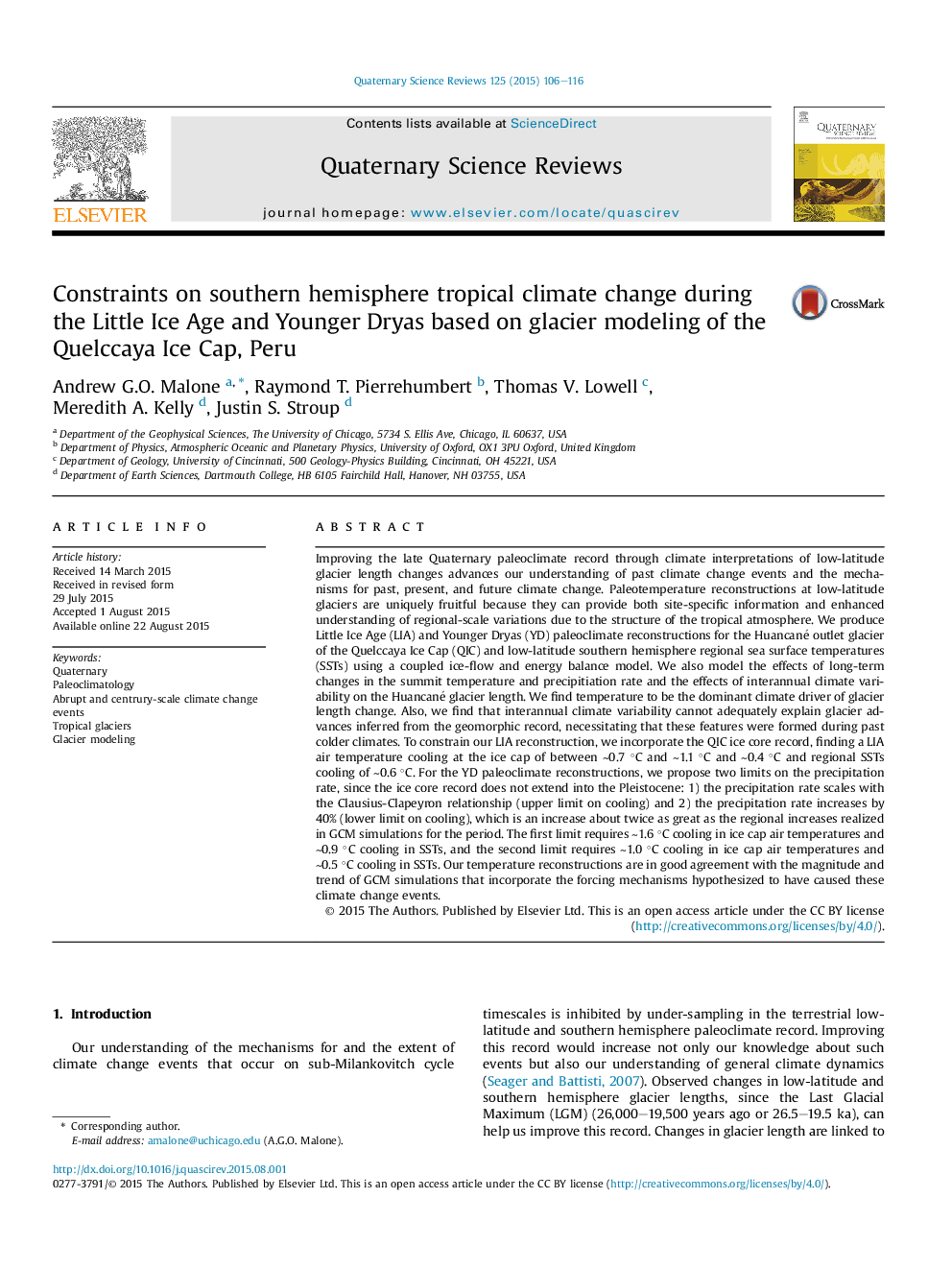| Article ID | Journal | Published Year | Pages | File Type |
|---|---|---|---|---|
| 6445494 | Quaternary Science Reviews | 2015 | 11 Pages |
Abstract
Improving the late Quaternary paleoclimate record through climate interpretations of low-latitude glacier length changes advances our understanding of past climate change events and the mechanisms for past, present, and future climate change. Paleotemperature reconstructions at low-latitude glaciers are uniquely fruitful because they can provide both site-specific information and enhanced understanding of regional-scale variations due to the structure of the tropical atmosphere. We produce Little Ice Age (LIA) and Younger Dryas (YD) paleoclimate reconstructions for the Huancané outlet glacier of the Quelccaya Ice Cap (QIC) and low-latitude southern hemisphere regional sea surface temperatures (SSTs) using a coupled ice-flow and energy balance model. We also model the effects of long-term changes in the summit temperature and precipitiation rate and the effects of interannual climate variability on the Huancané glacier length. We find temperature to be the dominant climate driver of glacier length change. Also, we find that interannual climate variability cannot adequately explain glacier advances inferred from the geomorphic record, necessitating that these features were formed during past colder climates. To constrain our LIA reconstruction, we incorporate the QIC ice core record, finding a LIA air temperature cooling at the ice cap of between â¼0.7 °C and â¼1.1 °C and â¼0.4 °C and regional SSTs cooling of â¼0.6 °C. For the YD paleoclimate reconstructions, we propose two limits on the precipitation rate, since the ice core record does not extend into the Pleistocene: 1) the precipitation rate scales with the Clausius-Clapeyron relationship (upper limit on cooling) and 2) the precipitation rate increases by 40% (lower limit on cooling), which is an increase about twice as great as the regional increases realized in GCM simulations for the period. The first limit requires â¼1.6 °C cooling in ice cap air temperatures and â¼0.9 °C cooling in SSTs, and the second limit requires â¼1.0 °C cooling in ice cap air temperatures and â¼0.5 °C cooling in SSTs. Our temperature reconstructions are in good agreement with the magnitude and trend of GCM simulations that incorporate the forcing mechanisms hypothesized to have caused these climate change events.
Related Topics
Physical Sciences and Engineering
Earth and Planetary Sciences
Geology
Authors
Andrew G.O. Malone, Raymond T. Pierrehumbert, Thomas V. Lowell, Meredith A. Kelly, Justin S. Stroup,
